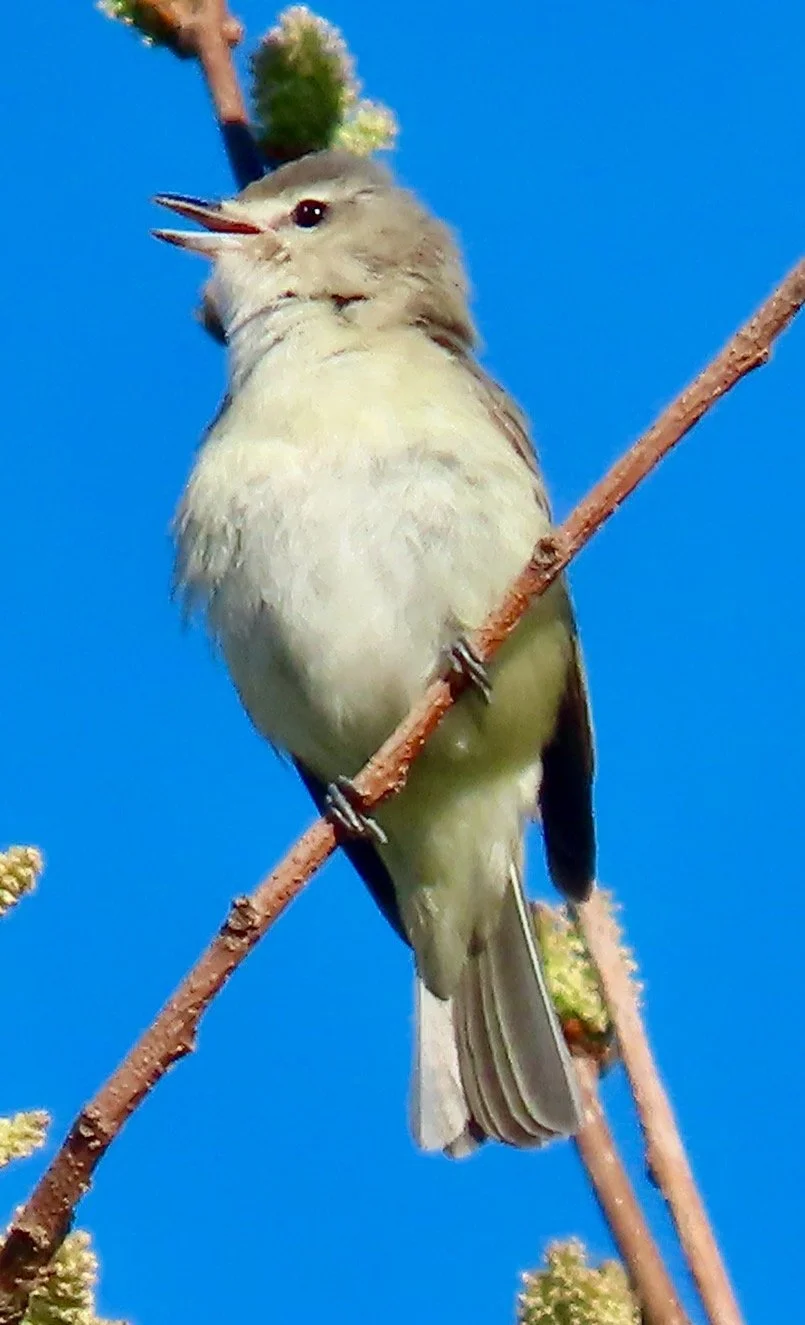Field Trip Recap: Douglass Park Walk for Families and Beginners
words by Sammy Cabindol
Summer is a good time for new and novice birders to practice birding basics and IDing. The weather is pleasant, resident birds stick to their local patches, and baby birds provide endless entertainment. Although the excitement of spring migration had passed, there was still much to explore in the birding world during the summer evening of June 27. A group of eight birders joined Sammy at Douglass Park to hone their birding skills.
A Black-crowned Night Heron greeted the group upon their arrival. This up-close look captivated the group as they gazed upon the heron’s brilliant red eye. The heron’s hunched posture and awkward gait amused the group, as well.
Black-crowned Night Heron. Photo by Nick Paarlberg, Douglass Park, June 27, 2025.
Then, an Eastern Kingbird came and perched at eye level just three yards from the group. The Eastern Kingbird is the largest regularly occurring flycatcher on this side of the Mississippi River, hence its Latin name Tyrannus tyannus. Sammy likes to say it’s the tyrant of tyrants.
A beautiful, rapid, bubbly song captured the attention of the group. It was a Warbling Vireo. Sammy’s tip for identifying this species’ song is to listen for the notes of an American Robin’s song, but jumble them up and place them in a confusing order. Or, take an American Robin out to a bar and get them to sing.
In searching for a mnemonic device to help the readers understand where Sammy was coming from, he found a hilarious mnemonic for the Warbling Vireo’s song: *Imagine a Warbling Vireo looking for a tasty worm meal. If-I-could-see-you, I’d-seize-you, ‘N-squeeze-you, ‘Til-you-squirt! It’s ridiculous, but listen to the Warbling Vireo’s song and you’ll understand.
Warbling Vireo. Photo by Randy Shonkweiler, Washington Park, May 17, 2022.
As the group continued around the lagoon, the quiet buzz calls of Blue-gray Gnatcatchers stopped them in their tracks. These tiny, blue ping-pong balls were incredibly difficult to see, but the group patiently waited for movement amongst the tall tree tops.
Finally, one gnatcatcher sat perched on a branch with no leaves, providing a clear shot of its plump body and long tail. Then, another one came from an adjacent tree. Then, another—and another! With the persistence of the beginner birders, they viewed four Blue-gray Gnatcatchers in their binoculars’ sights!
American Robin. Photo by Nick Paarlberg, Douglass Park, June 27, 2025.
In the setting sun, young American Robins—with their chocolate-chip spotted breast—hopped along the park’s lawns. All in all, the group totaled 27 species.




